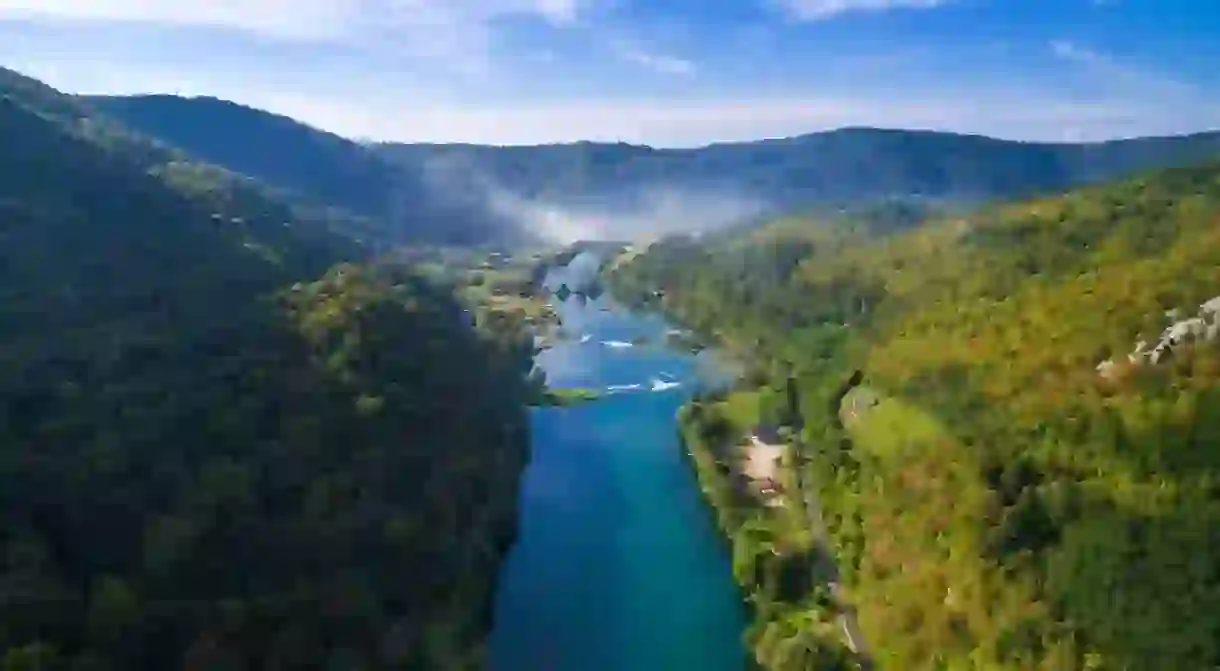Bosnia and Herzegovina: All Four Regions, Explained

We all know the name Bosnia, but did you know the actual name was Bosnia and Herzegovina? Perhaps. What about Republika Srpska and Brcko District? Very few people outside of the Balkans know about these places, but they form an essential part of the country. Here’s a straightforward breakdown of the complicated geography of Bosnia you should know before visiting.
Why is Bosnia so Complicated?
Compared to the situation in Bosnia, quantum mechanics and genetics are easy to understand. In Bosnia, there are three main autonomous regions with one extra thrown into the mix. A Bosnian can refer to one of three ethnic groups based on religion: Muslims (Bosniaks), Catholics (Croats) and Orthodox Christians (Serbs).
Ethnicity led to the Bosnian Wars, and today’s complicated situation is its legacy. The Dayton Agreement ended the War in 1995, creating a Federation between Bosnians and Croats, and a separate Republika Srpska.
Each region has a majority of their own groups, with Bosnia having Bosniaks, Herzegovina having a higher number of Croats and Republika Srpska having mostly Serbs. Each region also has their own representative president in the official UN Member State of Bosnia and Herzegovina. Brcko District is different altogether.
Now, do you see why it’s easier to understand particle physics than Bosnian (and Herzegovinian) politics? Stay with me; I promise I’ll try to make it easy to understand.
Bosnia
The region of Bosnia occupies the central region of the country’s landmass. The capital is Sarajevo. You’ll find Ottoman-style mosques in the different towns and cities. Muslims make up the majority, and life is more consistent with Islamic principles. Geographically, the River Drina and the River Sava make the invisible border to the north and east.

Herzegovina
Herzegovina makes up approximately a quarter of the country covering southeastern regions near the Croatian border. Catholic Croats make up a slight majority to the west of the River Neretva and even more live closer to Croatia’s border. Most of the landscape is mountainous, and some of Bosnia’s best wines come from here.
The unofficial capital is Mostar. Bosniaks tend to live to the east of the River Neretva and Croats on the west, making a somewhat divided city. Tourists often feel like they’re passing from one country to the next as they cross the river.
Herzegovina has a claim to fame in the Catholic world. A small village called Medjugorje has become a significant pilgrimage site for Catholics since the 1980s, after six children reported seeing Mary, Mother of Jesus in the hills. Since then, 30 million people have descended on the village.
Republika Srpska
Republika Srpska, with Banja Luka as its capital, feels very different from the rest of the country. The region covers large parts of northern Bosnia and Herzegovina, as well as eastern areas towards the border with Serbia.
Two regions with a Serb majority in northeast Bosnia and central Herzegovina self-proclaimed their independence in the early 1990s. SAO North-East Bosnia and SAO Romanija with a Serb majority wanted either self-rule or reunification with Serbia. The Republika Srpska absorbed both.
An invisible border separates this region from Bosnia, and many in Republika Srpska want more autonomy, independence or reunification with Serbia. Tensions remain high.

Brcko District
After the Dayton Agreement ended the war, the leaders continued arguing over who gets Brcko, a region in northeast Bosnia near both Croatia and Serbia. Unlike other parts, Brcko has mixed demographics. So, in 1999, an autonomous Brcko District was born. Today, the destination is a popular stopover when people travel between Serbia and Bosnia. If you get the chance, visiting this area is one of the most off-the-beaten-path experiences you can have in Bosnia.














